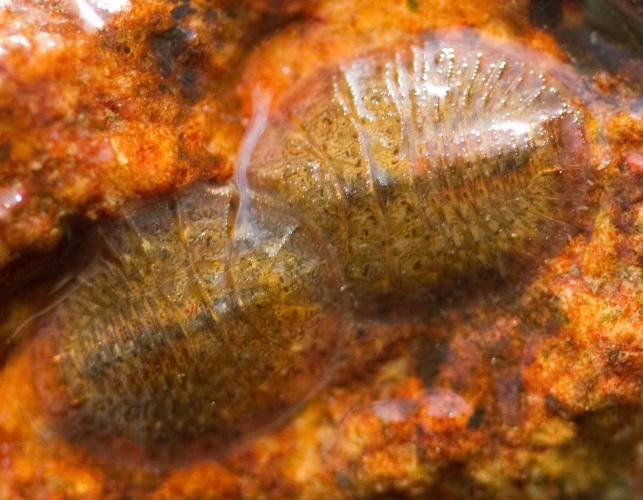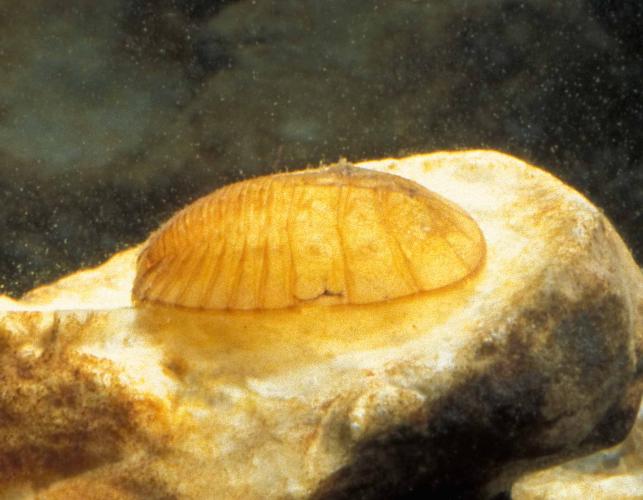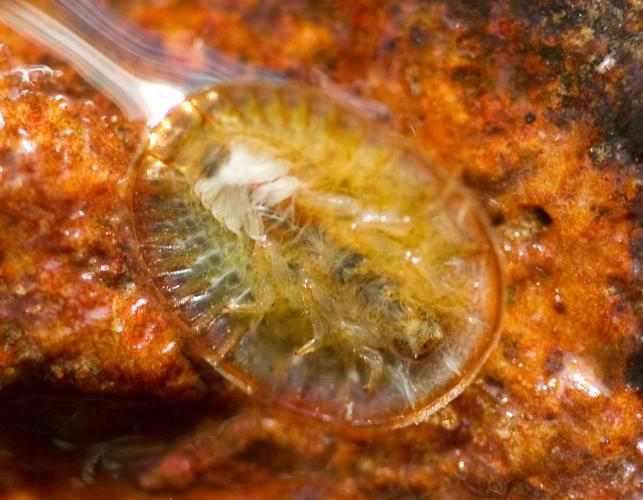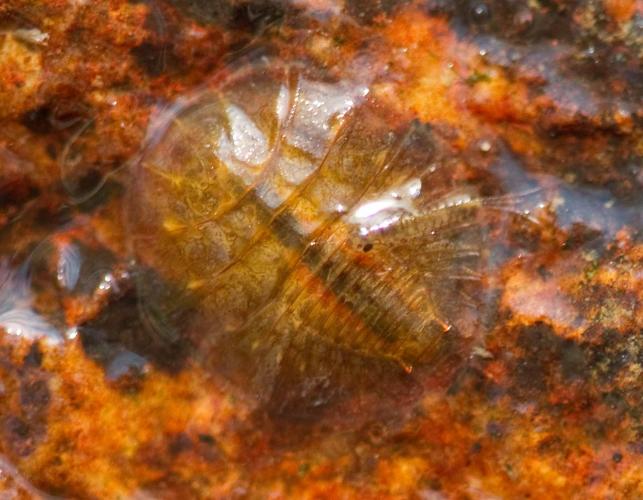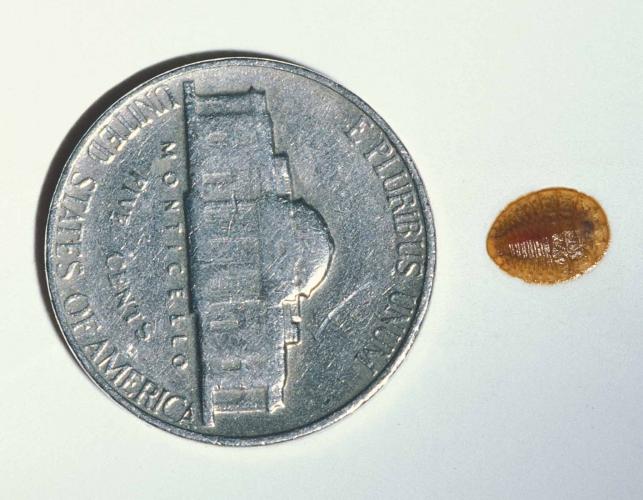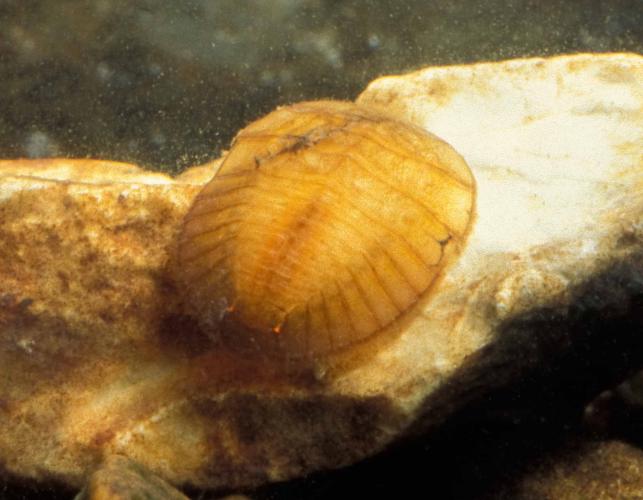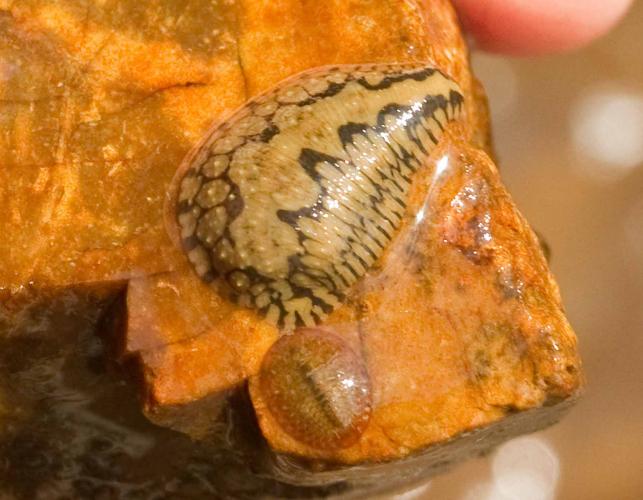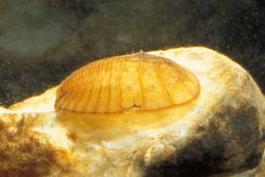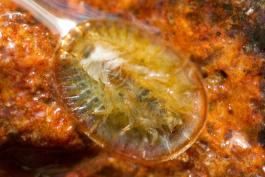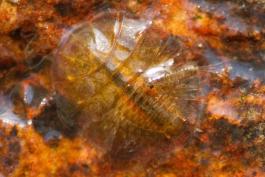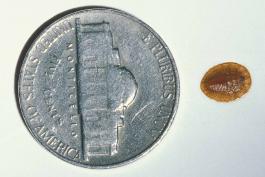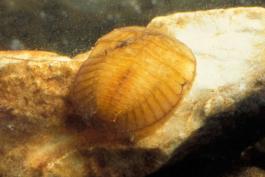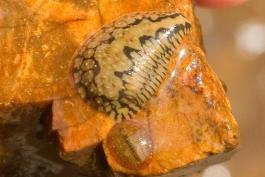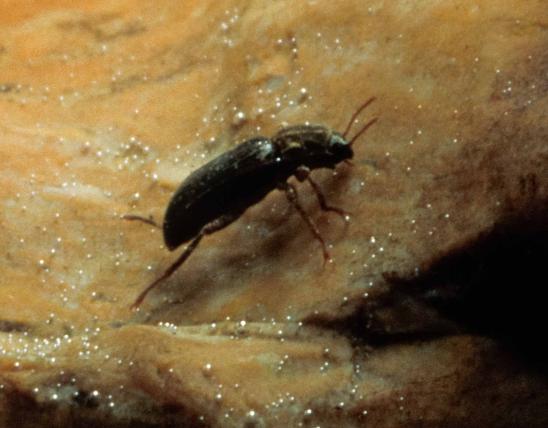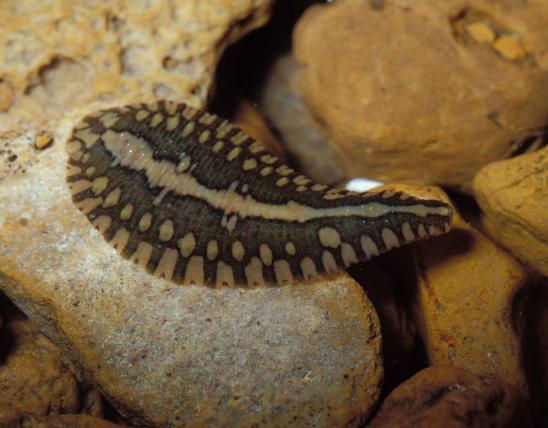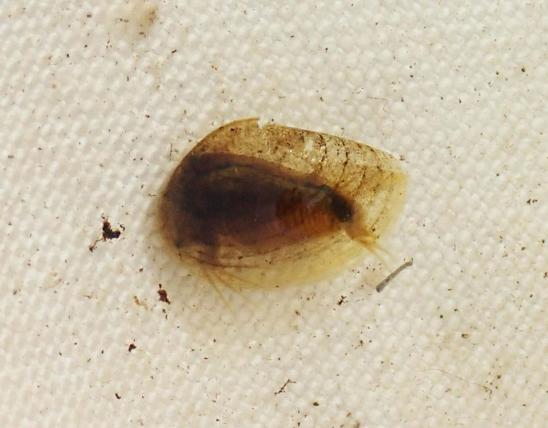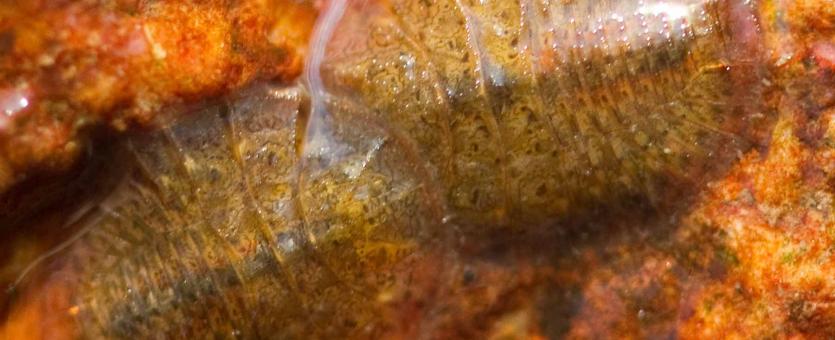
The flat, brown, nearly circular aquatic larvae of water penny beetles are more often noticed than the adults. Upon close inspection, you can see the segmented abdomen, thorax, and head. If you inspect the underside of a water penny, you will see 6 legs in the thorax region and tiny, feathery gills under the abdomen. Some species are more circular than others; others have slightly elongated bodies.
Adults are black or brown, oval, flattened beetles, usually wider at the hind end than in the front.
Length: larvae to nearly ½ inch; adults to ¼ inch.
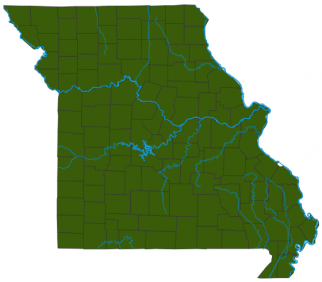
Statewide. Probably most abundant in the Ozarks, where there are so many clear, fast-flowing, rocky streams.
Habitat and Conservation
Water penny larvae cling to the undersides or sides of stones and other submerged objects in flowing, unpolluted water. Sometimes they cling to stones at the waterline, where splashing water keeps them moist. They don’t tolerate streams with high sediments or silt or with lots of algae. The flat shape and ability to cling to rocks helps keep them from being swept away in the current. It also helps them avoid predation. Adults are terrestrial and are often found on vegetation near streams.
Food
The larvae eat algae by scraping it off of rocks using rasps on their legs. Depending on species, they may also scavenge from a variety of other materials, including other aquatic invertebrates. We’re not sure, but it’s possible the short-lived adults might not eat at all.
Life Cycle
Water pennies go through the same life stages as other beetles, except that the larva is flat and looks like a penny instead of a grub! The larvae may take more than a year to mature. When they are large enough to pupate, they do so either underwater, still attached to stones, or in the soil near the stream. When they emerge as adult beetles, their mission is to locate the opposite sex, mate, and lay eggs; they don’t live long as adults.
Human Connections
Many people are fascinated by the natural world. Water pennies are one of the truly nifty aquatic invertebrates that bring out the child in all of us. Some of them really do look like pennies!
Ecosystem Connections
Biologists can gauge the health of a stream by taking a census of the aquatic insects that live in it. Because water pennies cannot tolerate pollution, high sedimentation, and high amounts of algae and fungi, their presence or absence in a stream is an indicator of the stream’s water quality.
